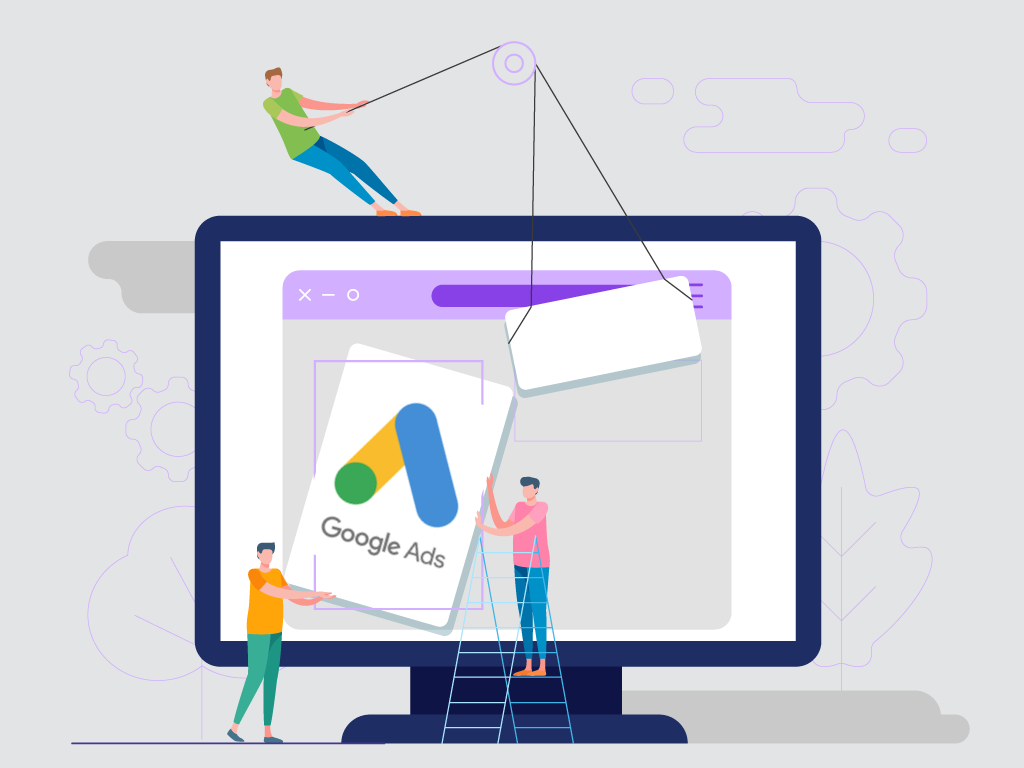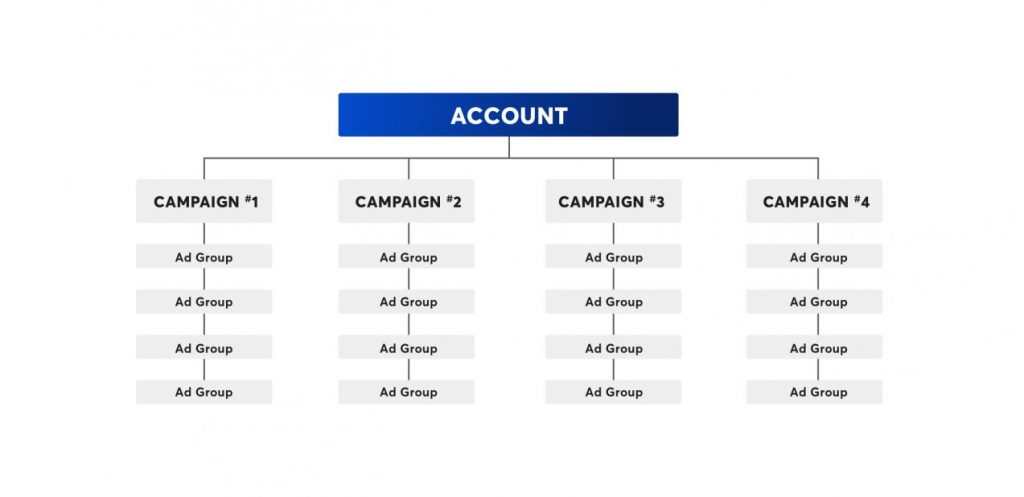Updated on May 20, 2021 to include additional examples and best practices.
This post is the first in a six-part series written by Portent’s PPC team outlining the fundamentals of building your first PPC account through Google Ads. Follow along in our series as we will be walking through the details and best practices of setting yourself up for success.

Building a successful PPC account in Google Ads starts with how you structure your account. Proper setup forms a solid backbone to create the building blocks of your Google Ads account. Having an organized and efficient structure for your campaigns and ad groups will help you better balance your budgets, improve your spending efficiency, and help drive better performance.
Getting your account structure right is vital to PPC success.
How to Structure Your Google Ads Campaigns
Before we get too far into it, it’s important to understand what a campaign means in the context of PPC. A campaign is a set of ad groups that contains your keywords, bids, and ad copy that shares a budget and settings. We’ll dive further into campaign settings later in this PPC series but for now, let’s stick to understanding PPC account structure.
Campaigns should be organized in categories of products or services that you offer. Campaigns can be broken up into categories of your products/services, geographic location targets, campaign types (search, display, shopping, etc.), or branded vs. nonbranded.
Product and Service Category Campaigns
A good place to start is with your website navigation. Let’s look at Ring.com as an example. They have a navigation pane on their website for their products and services that they offer.

We would break this into search campaigns for each product category, including the products seen here plus their protection plans. We would have a campaign for video doorbells, security cameras, security systems, security accessories, smart lighting, offers, works with Ring, Ring for business, and protect plans.
Branded vs. Non-Branded Campaigns
From here, we would separate our branded and non-branded campaigns. A branded campaign includes keywords that have your company or product name in them. An example would be “Ring video doorbell pro.” Non-branded would be keywords that don’t reference a brand name or company, such as “indoor security camera.”
Keeping branded and nonbranded campaigns separated in Google Ads helps with your spending efficiency. Branded clicks are generally cheaper because your quality score will be higher due to your relevancy to the keyword to the product/services you offer. However, branded traffic can be limited to users who know your brand/company. Non-branded campaigns have higher traffic volumes and can help turn new users into potential customers but are generally more expensive due to the competition with other companies bidding on the same keywords.
With our campaign list taking shape, let’s turn our attention to determining what ad groups will go into each campaign.
How to Build Out Your Ad Groups
Your campaigns contain your ad groups, and your ad groups contain your keywords, so ad groups should be thought of as groups of keyword themes. Keywords in each ad group should be closely related to each other. So within your campaign, we recommend that you divide your keywords that are similar to each other.

Let’s take a look at Ring’s security cameras. Each of these sub-products can be its own ad group. For example, we could have an ad group for indoor cameras, stick-up cams, spotlight cams, and floodlight cams to start. However, your keyword research (which this series will cover) could dictate how many ad groups there are. A good rule of thumb is to have between 20-25 keywords per ad group with no more than 30. These keywords should be grouped into closely related themes such as “How To Buy an Indoor Cam” or “Wireless Outdoor Spotlight Cam.” This starts to get more granular depending on where the user is in the marketing funnel, whether they are beginning their research and looking for more information on wireless outdoor cameras or ready to buy an indoor camera. To create ad copy and landing pages that are most relevant to that ad group, think about where the user is at in their journey and their intention behind their search.
The following chart gives you a visual representation of how the account structure should be built after we break out our campaigns and ad groups from the website.

After building out the structure of your ads account, it’s time to move on to filling the structure you’ve just built.
Check out the rest of the six-part series:
PRIMER: What is PPC – Pay Per Click Marketing Explained
PART 1: Structuring Your Google Ads Account (you are here)
PART 2: Understanding Campaign Settings
PART 3: Researching Keywords
PART 4: Writing Engaging Ads
PART 5: The Best Google Ads Extensions to Implement
PART 6: Tracking Success










Chad – added your article to http://www.inboundreport.org!